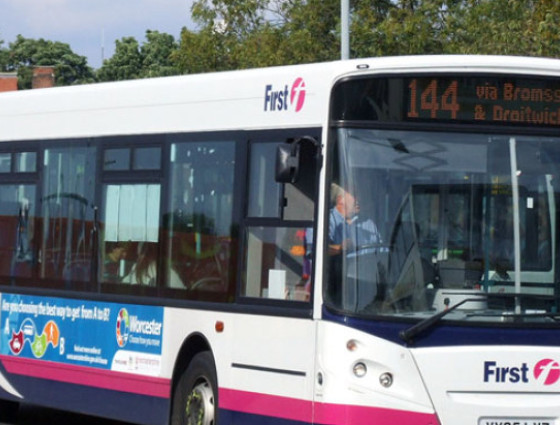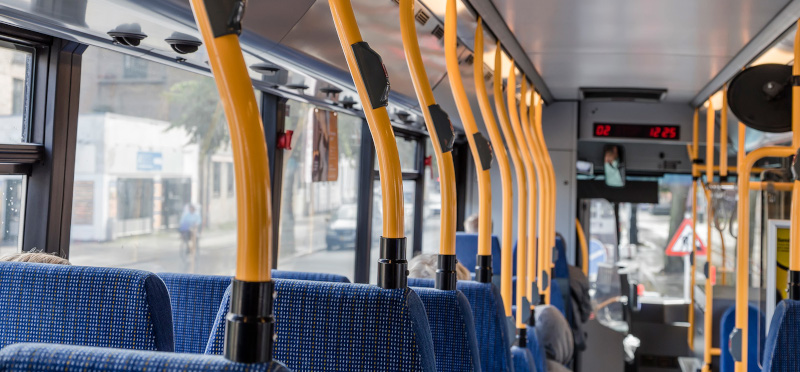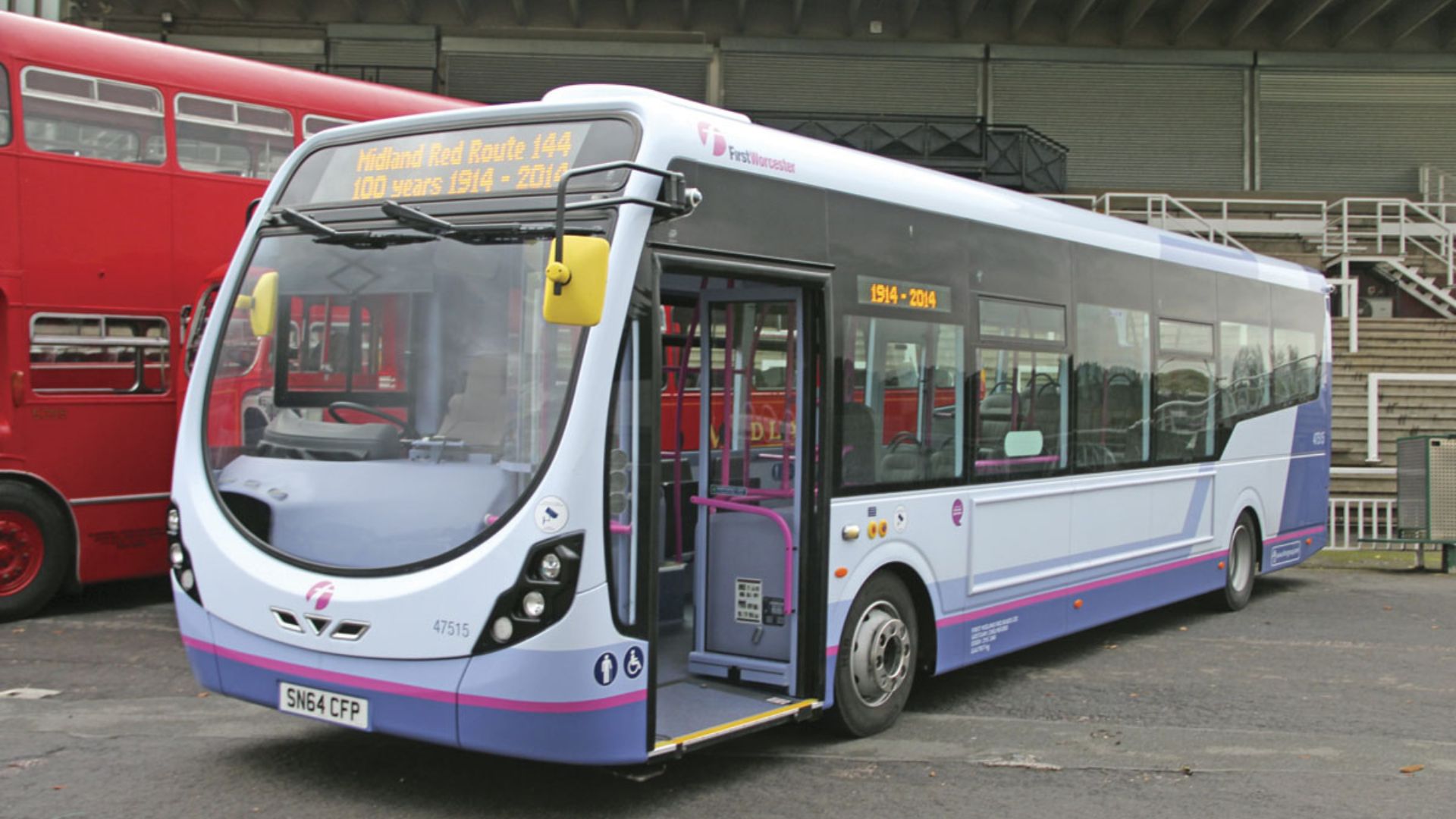

Worcestershire Bus Service Improvement Plan (BSIP)
The Strategy focuses on road and rail passenger transport services within Worcestershire, including Home to School, bus, taxi, community transport and other community-based bespoke transport initiatives.
About the plan
In 2019 we launched our Passenger Transport Strategy following extensive consultation.
The Strategy focusses on road and rail passenger transport services within Worcestershire, including Home to School, bus, taxi, Community Transport and other community-based bespoke transport initiatives.
As part of the central government funding requirements, Worcestershire County Council has spent:
- £362,000 on supporting bus service infrastructure for 2023 and 2024
- £469,675 on supporting bus service infrastructure for 2024 and 2025
Enhanced Partnership Plan and Scheme
The Enhanced Partnership enables us to work in co-operation with commercial operators to help deliver an efficient, reliable bus network which meets the needs of Worcestershire’s residents, improving customer satisfaction and encouraging increased use of local transport services.
View the full plan here: Enhanced Partnership Plan and Scheme January 2025 (PDF)
Additional information
Core to the strategy, we are committed to working closely with transport providers to enhance and improve passenger transport across Worcestershire, to provide a quality of service that our residents, visitors and businesses need and expect.
Worcestershire’s Bus Service Improvement Plan (BSIP) recognises that the “building back better” National Bus Strategy compliments its Strategy and presents an opportunity to develop a long term sustainable and enhanced network.
We have developed a number of core principles and targets that have come out of analysing all the data to date and highlights the areas of focus that will form critical elements in the creation of the Bus Service Improvement Plan (BSIP) and Enhanced Partnership (EP).
Download: Worcestershire BSIP Schemes Delivery Plan 2025 to 2026 (PDF)
Download: Worcestershire Bus Service Improvement Plan (BSIP) 2024 (PDF)
Download: Worcestershire Bus Service Improvement Plan (BSIP): Executive Summary (PDF)
Core principles and targets when working in partnership will allow for:
- delivery on national Bus Strategy principles
- delivery of Worcestershire passenger strategy aims and objectives
- deliver a sustainable quality of service that our residents, visitors and businesses need and expect
Core principles
Worcestershire Bus Service Improvement Plan is based on seven core principles that we feel working in partnership will deliver both on national objectives as well as complement the recently published Worcestershire Passenger Transport Strategy.
We are confident that these core principles form solid foundations on which to improve and transform bus services within the County.
Network Prioritisation: Intensive services and investment on key strategic corridors, with routes that are more frequent, operate longer and are easier to understand. This will be supported by increase in bus priority.
Improving the image of Public Transport: Local bus network presented as a safe and secure single system, with clear passenger information and branding. To provide excellent customer service (reflecting on customer surveys) supporting the delivery of our Passenger Charter.
Alternative Service Provision: Support strategic corridors through Demand Responsive Transport (DRT) and Community Transport with integrated service patterns with other modes
Bus Infrastructure improvements: Progress to a consistent, uniform and quality provision of infrastructure that is safe and secure and facilitates passenger transport use both on and off bus
Modal Integration: Focus on providing an integrated Passenger Transport network, including Hubs and Rail Stations
Technology and Innovation: Recognise the importance that Technology and Systems play in the delivery of a sustainable and integrated Passenger Transport Network.
Fares and Ticketing: Deliver lower and simpler fares with integrated ticketing between operator and modes.
Key targets
Setting targets
Critical to Worcestershire’s Bus Service Improvement Plan is the setting of ambitious targets, through the analysis of Worcestershire’s current network.
Ambitious targets are required to build the network back to pre-Covid levels (enhanced by 25%), recognising the recent steep decline in patronage and reduced funding. We will actively market and promote services to encourage passengers back to a more extensive and attractive network.
Worcestershire Bus Service Improvement Plan includes specific measures to improve frequency, service provision and priority measures but further feasibility studies will inform our objectives.
The targets provided in this version of the Plan are indicative at this stage, however we are confident that they are realistic and will enable us to start the delivery phase if we receive confirmation of our successful application. Targets will be agreed with operators and will be reviewed at the outset of the Enhanced Partnership.
With relevant funding Worcestershire can have network that is comparable to other areas of the Country with fast, frequent bus services, with bus priority measures where achievable which will reduce journey times for passengers and operating costs for Operators.
We believe bus services need to be attractive to non-users as well as regular current users and core to our BSIP is to improve the level of services in every area of the County.
Worcestershire BSIP objectives will provide delivery mechanisms to improve the core targets around Journey Time, Reliability, Passenger Growth and Customer Satisfaction. These Targets will then be supported by several deliverables based on the Core Principles of the BSIP
Journey Time (JT)
Targets for journey time will look at various elements on our newly proposed network and define new and more innovative ways to monitor journey time.
We will monitor the core “strategic” network. less frequent feeder or “subsidiary” services and “Demand Responsive Transport”. We will monitor this formally every 6 months.
We are also proposing to compare bus journey time to car journey time to build up a picture where differences occur which will enable us to consider network prioritisation measures.
We are setting an ambitious target to make bus travel comparable or better than using the Cars.
We believe we can build a live “barometer” of journey time that will enable us to be more reactive to passenger requirements especially with messages to the public to inform of any disruption.
Key journey time Targets of BSIP
- JT1 - Improve journey times on Strategic, Subsidiary and DRT services.
- JT2 - Improve journey times when compared to Car Travel.
- JT3 - Introduce a live “barometer” of Journey times to monitor network performance.
- JT4- Monitor public perception of Local Bus provision when compared to current methods of travel
Reliability (RT)
Targets for reliability will be based on real time information data that we can already capture and compares live data to timetable.
As we build the new network, we need the authority and operators to work in partnership to provide a more ambitious and reliable network.
We will look at new and innovative methods of measuring reliability for DRT services
Key Reliability Targets of BSIP
- RT1 - % of services on time on Strategic Corridors Timing Points
- RT2 - % of services on time on Subsidiary Route Timing Points
- RT3 - DRT – consider which measures we could use.
- RT 4 - Monitor public perception of reliability of services
Passenger Growth (PG)
While it is too early to completely understand the changes in travel behaviour caused by the Covid Pandemic measures need to be taken within the County to improve the network and attractiveness of the
We will be using the pre-pandemic 2018-19 as the baseline for patronage. Our initial target is to build patronage to pre-covid levels by the end of 2022-23 subject to funding availability to maintain and enhance the Worcestershire Strategic Network.
By delivering a more attractive network supported by improved infrastructure and sustained marketing and publicity methods this will be achievable.
We then have a highly ambitious target of improving patronage by 10% on the 2018-19 baseline by the end of the initial 3-year funding window (2023-2024).
By 2030 with a more commercially viable and enhanced network we feel that we could see an ambitious target of 25% increase in patronage compared to the 2018-19 baseline.
Key Passenger Growth Targets of BSIP
- PG1 - Build patronage levels to pre-covid levels by the end of 2022-23
- PG2 - Increase patronage by 10% on 2018-19 baseline figures by 2023-2024
- PG3 - Increase patronage by 25% on 2018-19 baseline figures by 2030
Customer Satisfaction (CS)
Critical to the ambitions of our BSIP is customer satisfaction. We know from Transport Focus and NHT surveys Worcestershire does not score as high as comparable authorities.
While we have seen improvements in customer satisfaction this BSIP recognises that improving satisfaction levels is key to delivering an attractive and effective network.
We will continue to monitor satisfaction in a variety of ways and continue to consider best methodologies for combining results from different mechanisms.
Our initial target is for Customer Satisfaction for the overall journey to be above the average for all authorities. Based on current satisfaction levels this is highly ambitious. This needs to be achieved by 2023-2024.
This BSIP also recognises the importance that new and innovative measures can aid in improving customer satisfaction and this can clearly be seen in the way that DRT service satisfaction can be monitoring in an operational environment.
This BSIP also sets a target to look at introducing new and innovative methods of monitoring customer satisfaction on Local Bus by the end of 2022-23
Similarly, a Passenger Charter will be created within the first few months of the financial year 2022-23 which will highlight what passengers can expect from Worcestershire’s network and how users can provide relevant feedback.
Key Customer Satisfaction Targets of BSIP
- CS1 - Overall customer satisfaction levels to be above the average of all authorities by 2023-2024
- CS2 - Live monitoring of satisfaction across all strategic services by 2022-2023
- CS3 - Creation of a passenger charter by the end of 2022
Outline deliverables
Deliverable Objectives Overview
To achieve the ambitious vision for the Worcestershire Passenger Network seven objective areas for delivery have been developed within the BSIP.
These will focus on a delivering a network that is suitable for all residents within Worcestershire. These combine the aims and objectives of Worcestershire Passenger Transport Strategy and the requirements the National Bus Strategy.
Network Prioritisation – Levelling up Deliverables
- Increase frequency of services on Worcestershire Strategic network. (NPF)
- Increase service level patterns to meet the needs of residents (NPS)
- Bus Priority - Address operator congestion and pinch points that are impacting services (NBC)
- Bus Priority - Accelerate the delivery of Measures in Worcestershire (NPD)
- Bus Priority - Introduction of additional bus clearways and look to make these enforceable (NPE)
- Bus Priority – Mitigate the impact of Roadworks (NPR)
- Consider Education and Social Care Provision as part of the Worcestershire core network offer (NPN)
Find out more about levelling up deliverables
Improving the image of bus travel (TI)
- To develop a clearly defined and understood “brand” for the Worcestershire passenger transport network, used consistently across the network (TIB)
- Continue to enhance the way Information is provided on Worcestershire’s digital estate (TID)
- Ensure that information on the Worcestershire Transport network is accessible for all users (TIS)
- Develop a passenger charter allowing users and non-users to engage with the authority including how Information will be presented and accessed (TIP)
- Co-ordinate and limit to a minimum the number of timetable changes for passenger bus services; (TIC)
- Provide a safe and secure environment to Travel (TIE)
Find out more about improving the image of bus travel deliverables
Alterative Service Provision (AP)
- Provide alternative forms of transport where normal modes are not cost effective (APA)
- Improve integration of alternative Service provision into the Worcestershire Network (API)
Find out more about alterative service provision deliverables
Bus Infrastructure (BI)
- Progress to a consistent, uniform, accessible and quality provision of infrastructure that facilitates passenger transport use both on and off bus (BIC)
- Deliver next generation mobility hubs to integrate Alterative Service provision and Active Travel with Local Bus Services (BIM)
- Consider income generation opportunities (ring-fenced back to Local Bus Network) (BIL)
Find out more about bus infrastructure deliverables
Modal Integration (MI)
- Focus on providing an integrated Passenger Transport network (MIT)
- Build on previous experiences and refresh Choose How You Move (CHYM) as a mechanism for promoting Modal Integration (MIC)
Find out more about model integration deliverables
Technology and Innovation (TE)
- Expand Worcestershire Real Time Information System (TER)
- Consider Net Zero objectives when considering infrastructure (TEZ)
- Deliver Ultra-Low and Zero Emission Buses within the County (ZEB)
- Deliver next generation accessible information on and off-bus (TEA)
- Improve and develop mechanisms for improving data that can be presented in relation to the network (TED)
Find out more about technology and innovation deliverables
Fares and Ticketing (FT)
- Review current Worcestershire Fare structures and consider simpler and lower fare structures (FTF).
- Review current multi-operator tickets and evaluate smart and Innovative ticketing products to meet evolving passenger requirements (FTM).
- Develop mechanisms for capping using tap on/ tap off technologies (FTO)
- Review current school ticketing offers (FTV)
Related

Plan your journey, search for bus timetables or find out about bus service disruptions.

Find out about bus timetables, live travel updates, passes, tickets and operators.
 Facebook
Facebook X
X Email
Email WhatsApp
WhatsApp Messenger
Messenger